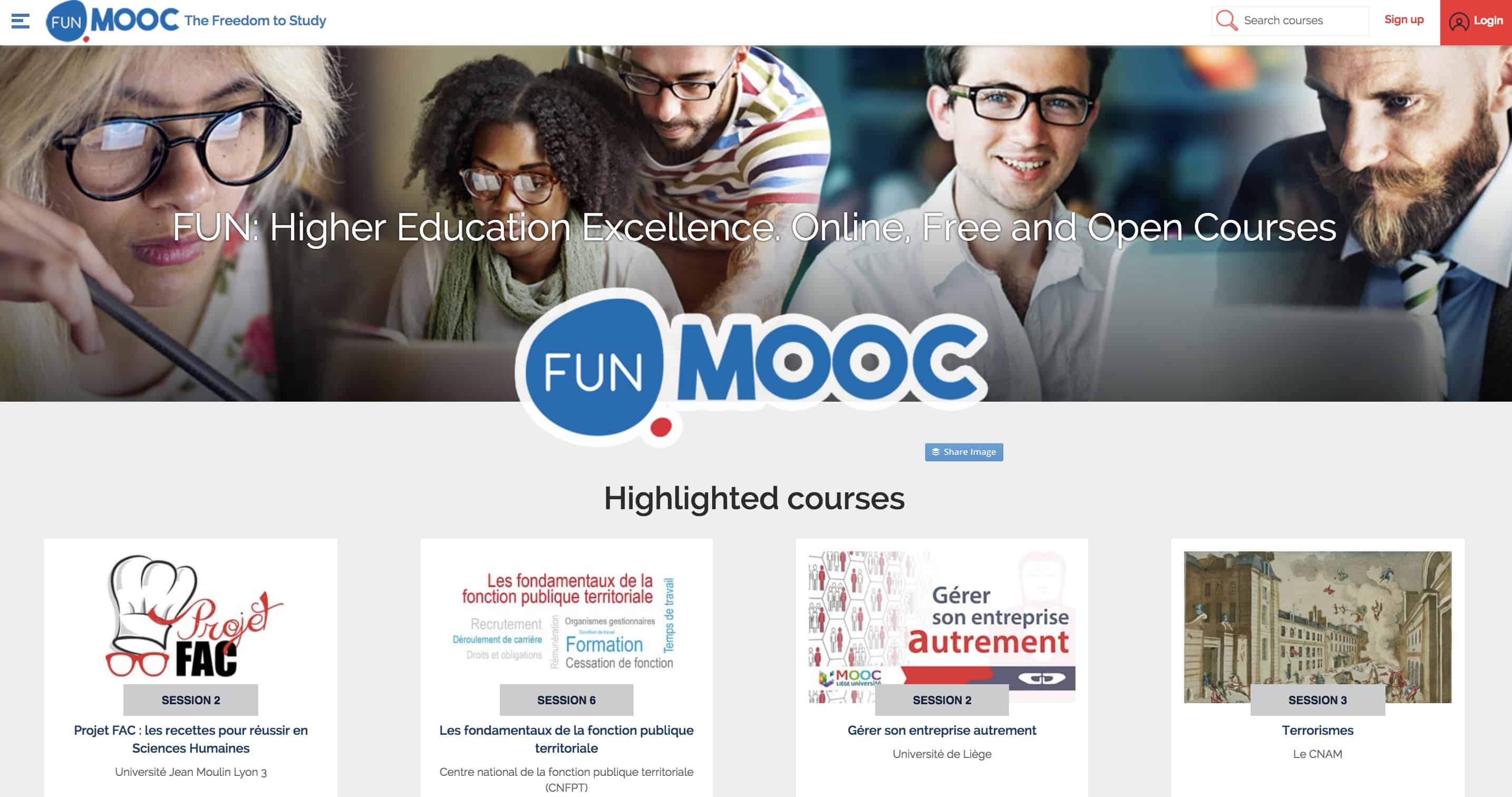Monetizing A MOOC Platform
We explore how the France Université Numerique (FUN) MOOC platform makes money.
MOOCs first sparked people’s interest and imagination because they were free. The concept of university courses you could take without paying tuition intrigued and excited people. It also caused many to wonder, Why would universities be willing to effectively give away their content? Yet, such was the excitement that despite the questionable economics of free courses, more and more universities jumped on the MOOC bandwagon. Courses – and the platforms to host them – proliferated.
Six years on, the equation looks a little different. MOOC users are being monetized, as Class Central’s Dhawal Shah has explained in his analysis on the Six Tiers of MOOC Monetization. But while there is demonstrated potential for money-making in the MOOC endeavor, not every platform has adopted exactly the same revenue model. Furthermore, not every platform was created with the goal of maximizing profits. Among those platforms that aren’t bankrolled by massive VC investments, many were created to serve a public purpose. Those platforms in particular are still figuring out how to achieve financial sustainability without simply looking for new ways to charge users.
Related
- France Université Numérique: Meet the MOOC Platform Funded by the French Government
- FUN course catalog on Class Central
France Université Numerique (FUN) offers one compelling example of how a MOOC platform can rely on multiple revenue streams to reach its financial goals. The FUN platform was launched in 2013 to serve the needs of both French nationals and francophone learners around the world. The platform has grown substantially in that time. As of June of this year, FUN boasted over 1.4 million users and 426 MOOCs from 112 different institutions. Below are the five different revenue streams FUN has developed thus far.

Revenue Source #1: Public Funding
As an initiative of the French Ministry of Higher Education, Research, and Innovation, FUN’s first source of financing was the Ministry itself. However, as was reported by l’Etudiant last year, “The government funds less than half of its €2.5 million annual budget and the end of its five-year commitment is near.”
Revenue Source #2: Dues from Members and Fees from Non-Members
To close the funding gap, in 2015 a public organization was created to support the platform. Current membership encompasses nearly 200 French institutes of higher learning, with members paying dues to the organization. This model is similar to how the much larger nonprofit MOOC platform edX is constituted.
While members of FUN’s public organization are able to host courses on the platform as one of the benefits of membership, non-members must pay a fee to host their courses on the platform. Academic and nonprofit organizations pay €4,500 for the first edition of the course (with a discount of 20% for subsequent runs).
Revenue Source #3: Licensing of Content Through FUN Campus and FUN Corporate
High quality online courses are expensive and time-consuming to create, but once they have been created they continue to have value over time, sometimes for audiences that were not originally anticipated. As Catherine Mongenet, Director of the FUN MOOC platform, explained it, “Professors and universities who have created MOOCs want to reuse them on campus with their students, or they want to sell them for continuous education.”
Whether in a corporate or an academic setting, administrators who are offering a course want to be able to monitor user progress and activity. However, due to FUN’s rigorous protections of user privacy, that kind of monitoring simply isn’t possible on the FUN platform. To solve that problem, FUN created two new platforms. The original FUN platform continues to operate as is always has. Meanwhile, FUN Campus allows universities to offer MOOC content to enrolled students. Currently, about 15 universities are using 50 courses through FUN Campus. FUN Corporate provides the same functionality to corporate entities. Both of these platforms charge fees for the use of the courses and for access to user data.
Revenue Source #4: White Label Platforms and Private Courses
In some cases an organization wishes to provide a set of courses to a group of users through its own branded platform. To serve that need, FUN has created white label platforms and private courses for professional associations, government agencies, and even national governments. Four such platforms are currently operating, including platforms for universities in Morocco and Côte d’Ivoire. Three more platforms are scheduled to be created, including one for French public servants, one for professional training in Luxembourg, and one for the nuclear power industry.
Revenue Source #5: User Fees
Finally, like other MOOC platforms, FUN offers much of its content to learners for free. However, some courses do charge a small fee to students who wish to earn a certificate.
Unfortunately, we don’t have numbers to report on these various revenue streams. Still, it is worth noting that a not-for-profit MOOC platform likely needs to diversify in order to remain in the black. As always, in addition to covering new developments in the design and delivery of online courses, we’re keeping our eyes on the money side of the MOOC equation.






